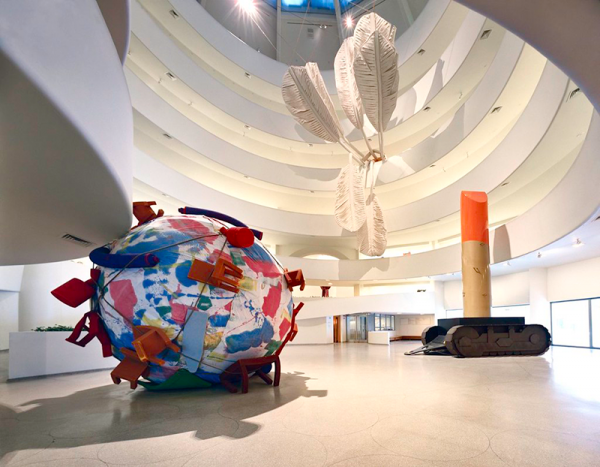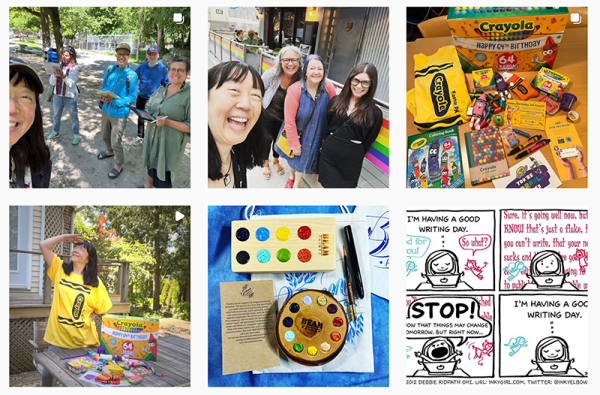So many writers are hoping to engage readers, and in doing so, they look to social media. For example, perhaps you’ve heard TikTok is leading to loads of sales of books, so you are either:
- Terrified to even look at TikTok.
- Exploring how you can become active on TikTok in the least socially embarrassing way.
I mean, sure, there are other options, but when I mention TikTok to most writers, there is a millisecond between me mentioning it, and them saying, “No way. Not now. Not ever.” So let’s consider: what is it about TikTok that is leading to book sales? I’m going to simplify it to this:
It creates an immersive experience.
That’s it. Through that immersion, readers give their attention, they hold their attention, and feel a compelling sense of connection. That’s immersion. Now, you may be thinking, “Dan, I am not doing dances on TikTok to sell books.” But I don’t think that is the immersion happening here. Instead, it is the immersion of emotion. These videos that are getting millions of views are capturing the excitement, heartbreak, and revelation that books provide. They also connect you to a like-minded reader like yourself, someone who loves being swept up by certain kinds of stories and books. Imagine if you moved to a small town, and walked into the local cafe, and there were a whole bunch of people who read exactly the kind of books you did, and they were always talking about them, and welcomed you into the conversation. That is how many readers feel about TikTok. That kind of immersion.
But today’s message is not about TikTok, per se.
Today, I want to explore what it means to create an immersive experience, and how you can apply that in wide variety of ways to how you share about your writing in a manner that feels authentic and accessible to you. Let’s dig in…
Simple Changes Can Create a Big Impact
This week, artist Claes Oldernburg passed away at age 93. I first became aware of his work at a Guggenheim exhibit in the 1990s. When you entered the building, you saw these massive sculptures, which felt much bigger in person that this image conveys:

What are they? Stuck halfway up the building is a ridiculously oversized shuttlecock, the thing you hit back and forth in the game of badminton. The sculpture on the right is a tank that has had its weapon replaced with a tube of lipstick. The scale of the work made you rethink everyday objects in compelling ways. I mean, just imagine the size of the person who would hit a 3 story tall shuttlecock. Or a tank arriving on the scene, and instead of firing a gun, extending lipstick to paint something colorful. A closer photo:

His work was immersive to me, drawing me in with the absurd manner in which he looked at the world. Of course, the Guggenheim itself is immersive, a space that allows you to casually walk down the sides as you look at art in front of you, but also seeing all the other art in a distance. The movement creates a unique experience of art that no other museum matches.

For much of Claes Olderburg’s art, he used two methods that illustrate how simple the path to immersion can be:
- Material.
- Size.
By simply changing the material you use, or the scale of what you are creating, something deeply compelling can be created.
For how each of us shares our own work, this same thing applies. So much of social media is filled with people copying “best practices” with the hopes of going viral. But what if instead of focusing on breadth, you focused on depth? Where you weren’t counting how many people, but instead, how deep the connection?
Immersion is a Choice
Creating an immersive experience doesn’t just happen, it is a choice. You’ve likely experienced this difference at a concert. The band who are doing everything they can to help the crowd get into the music, vs the band that just stands in the same spot for the entire show, with the same facial expression. The Rolling Stones just celebrated their 60th anniversary, and I’ve been watching videos of their recent live shows in Europe. Mick Jagger turns 79 this week, and It is just ridiculous how much he does to engage his audience. Go watch the entire 2 hour concert from July 11th. Or the entire 2 hour concert from June 16th.
Many writers hope that others will bring the immersion. That if they share a Tweet, that their followers will take all the initiative to reshare it, to comment on it, to like it. But when I study those who are great at creating immersive experiences, I find that they are working overtime to help others feel seen, to feel included, to feel engaged.
Look at how Debbie Ridpath Ohi does it in her Instagram feed:

Or how Jarrett Lerner does it in his Twitter feed. Or Susan Orlean.
The immersion you create is a choice. It signals to people not only what you care about, but how to connect to something deeper. This is not a “thing,” it is a process. And often, it involves the simple act of focusing on the people you hope to connect with, not a thing that you want to share. That is a small mindset shift, but an important one. One that says “I see you,” not “look at this.”
Immersion Requires Limits
I recently wrote about how great art and writing are almost always created with great limits. For example: a ridiculous deadline, lack of essential material, and other boundaries that force the creator to find novel solutions. For how you share, immersing people benefits from limits as well. Years ago, before I had kids, I had a listening room in my apartment. This is a room entirely dedicated to listening to music. Here is one half of the room, with the stereo and speakers:

And here is the other side with my single chair:

At the time, my wife had her own single-use room, her art studio. When I listened to music, I wouldn’t multi-task. I would sit there, eyes closed, and just listen. It was wonderful, and fully immersive, like an isolation chamber. This decision requires severe limits: no television in the room. No couch or other furniture that would add different uses to the room. The entire room was about clarity of a singular purpose.
If you want to immerse people with how you share, I would encourage you to focus on embracing limits. To go narrow in scope, but go deep on emotion and connection. Yes, this requires commitment. To know that the themes you write about matter to others as well, and find a way to connect those two things. Immersion is not about trends, it is about focus.
How can you create and immersive experience in how you share?
Thanks.
-Dan
